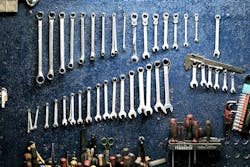Full Service is Key for Passing Emissions Tests
Emissions testing has become standard in states and municipalities all across the country. And while the testing procedures may vary from one locale to another, the goal is the same — to keep pollutants out of the atmosphere. The added task for auto repair technicians is to ensure optimal performance and fuel economy while keeping exhaust emissions within allowable standards.
Typically, emissions standards are intended to minimize levels of unburned hydrocarbons (HC), carbon monoxide (CO) and nitrogen oxides ( NOx). With the advent of the OBDII standards, the check engine light has become a common means of determining whether emission control devices and systems are working properly. An emissions test also commonly involves a visual inspection of emission control systems to check for tampering, along with a separate test of the fuel filler cap to ensure it is properly constraining evaporative emissions.
A key component of the emissions control system is the catalytic converter, which typically contains a honeycomb substrate coated with a precious metal like platinum or palladium. This precious metal causes combustion to occur within the catalytic converter, burning off fuel (HC) that remains in the exhaust stream exiting the engine’s combustion chambers. Depending on the configuration of the vehicle, it may have as many as three or four separate catalytic converters.
The performance of catalytic converters is typically monitored by oxygen sensors located ahead of, and behind, the converter. These sensors monitor the oxygen content of the exhaust and help determine whether the converter is doing its job.
Over time, and over many miles driven, carbon buildup can partially, or even fully, coat the precious metal substrate within the converter. This is especially true with cars that last much longer than they used to coupled with motorists often keeping their car well beyond 100,000 miles. With cars being driven so long, fuel system components like fuel injectors can degrade and become clogged, which will further contribute to compromised catalytic converter performance.
Replacing catalytic converters can be extremely expensive, with new replacements often costing a thousand dollars or more, not including labor. A much more cost-effective approach is the use of catalytic converter service kits, used by professional technicians, which include cleaning agents to help dissolve and flush contaminants from within the fuel management system.
On high-mileage vehicles, the use of such products can also be a valuable preventive service, cleaning converters and fuel systems before they become contaminated, possibly beyond repair.
These days, the traditional tune-up has been supplanted by diagnostics and extended service intervals that are often overlooked by motorists who don’t heed the recommendations in their owner’s manual. So it is incumbent on their service provider to monitor and evaluate all of a vehicle’s systems and recommend services that will provide the extended vehicle life their customers expect, without fear of the dreaded check engine light.
